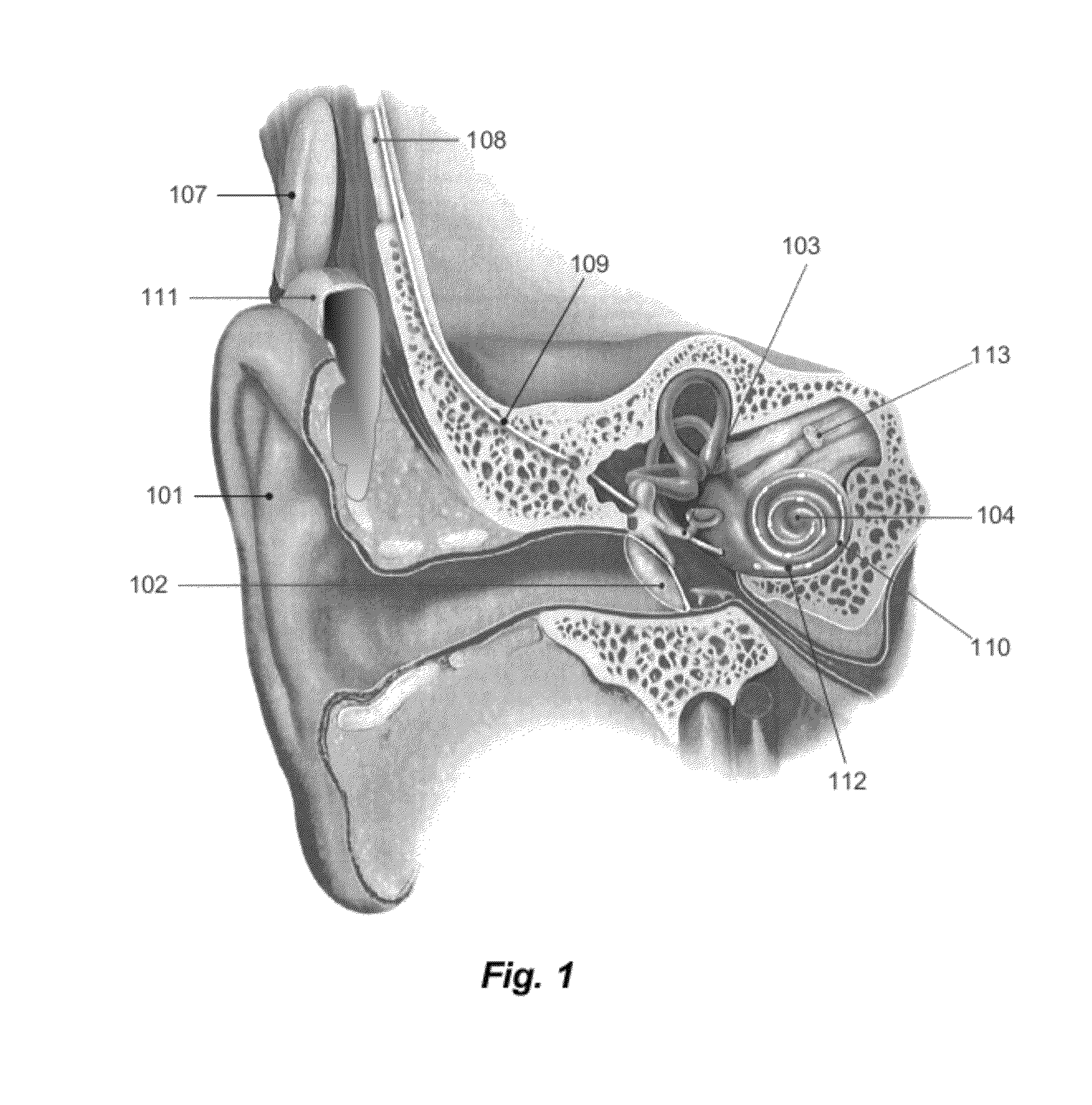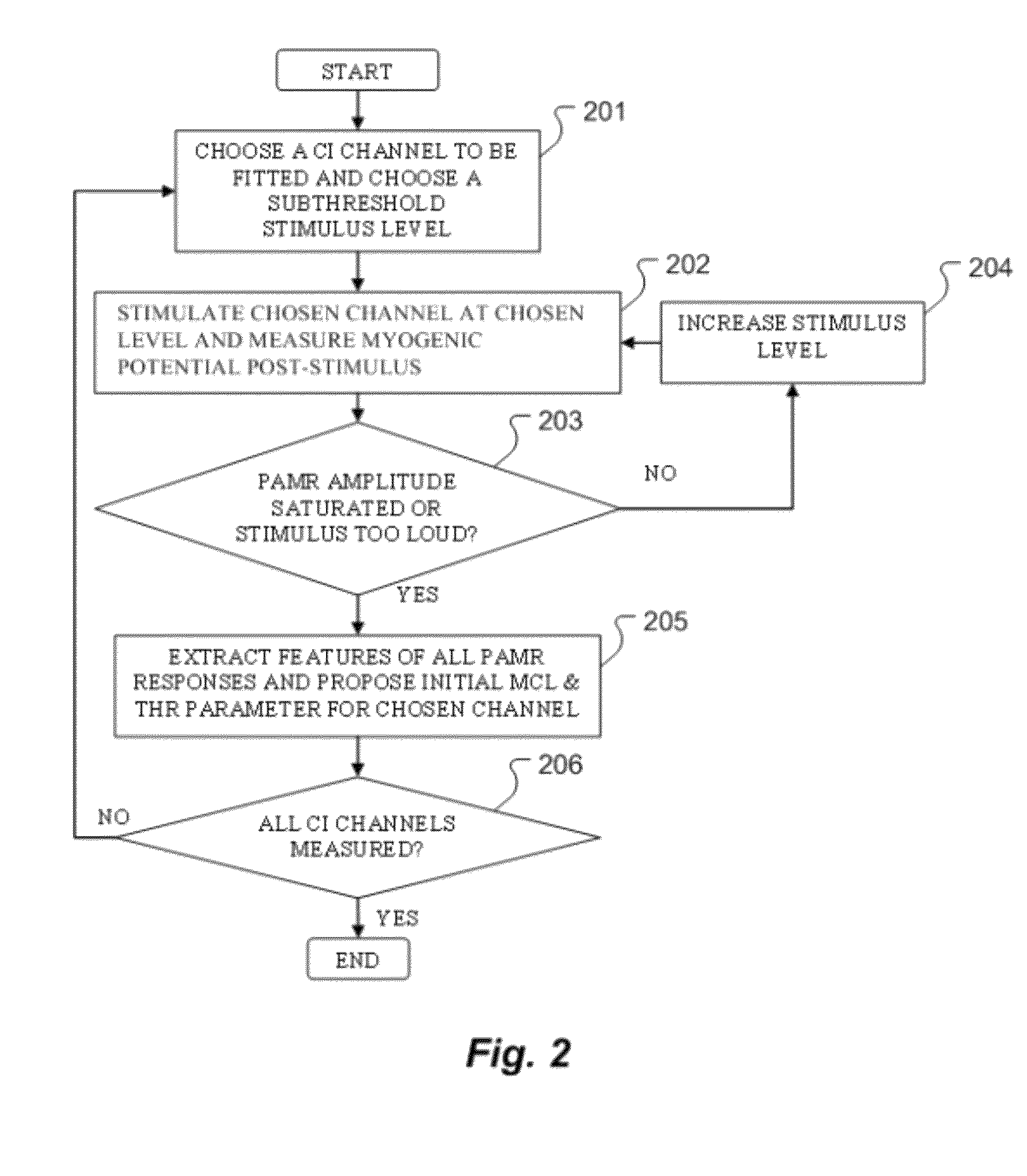Post-auricular muscle response based hearing prosthesis fitting
a post-auricular muscle and hearing prosthesis technology, applied in the field of hearing prosthesis systems, can solve the problems of difficult to reliably measure esrt and can only detect emlr in 35, and achieve the effect of increasing the post-auricular muscle tonicity
- Summary
- Abstract
- Description
- Claims
- Application Information
AI Technical Summary
Problems solved by technology
Method used
Image
Examples
Embodiment Construction
[0032]The post-auricular muscle reflex (PAMR) is a large myogenic response that occurs between about 10 and 25 ms after an acoustic stimulus. It has been reported that the PAMR threshold shows a high correlation with pure-tone average thresholds in normal hearing subjects and in subjects with sensorineural hearing loss using an acoustic stimulation. (r=0.82 at 2 kHz) Purdy et al., The Post-Auricular Muscle Response: An Objective Electrophysiological Method For Evaluating Hearing Sensitivity, Int J Audiol, National Acoustic Laboratories, Sydney, NSW, Australia, 2005, 44, 625-630; incorporated herein by reference. Purdy reported that PAMR can be reliably measured (>90%) when the eyes are turned towards the recording site. This reflects an increased PAM tonicity which can be explained by the Wilson's oculoauricular phenomenon which associates ear movements with lateral eye movements.
[0033]It is believed that the afferent pathway responsible for the PAMR includes the ventral cochlear nu...
PUM
 Login to View More
Login to View More Abstract
Description
Claims
Application Information
 Login to View More
Login to View More - R&D
- Intellectual Property
- Life Sciences
- Materials
- Tech Scout
- Unparalleled Data Quality
- Higher Quality Content
- 60% Fewer Hallucinations
Browse by: Latest US Patents, China's latest patents, Technical Efficacy Thesaurus, Application Domain, Technology Topic, Popular Technical Reports.
© 2025 PatSnap. All rights reserved.Legal|Privacy policy|Modern Slavery Act Transparency Statement|Sitemap|About US| Contact US: help@patsnap.com



